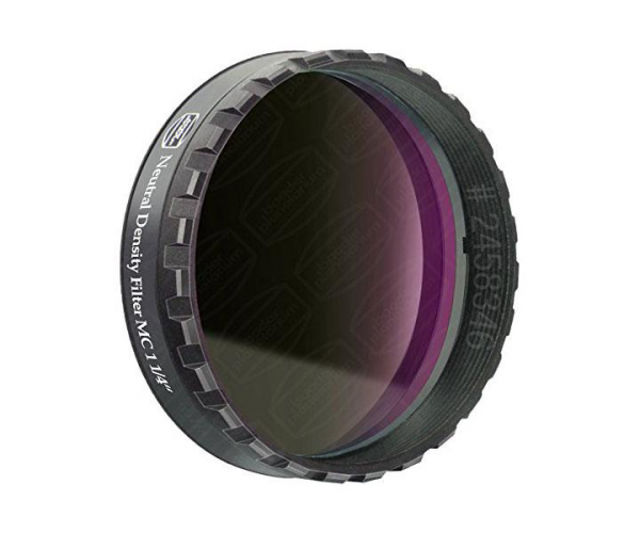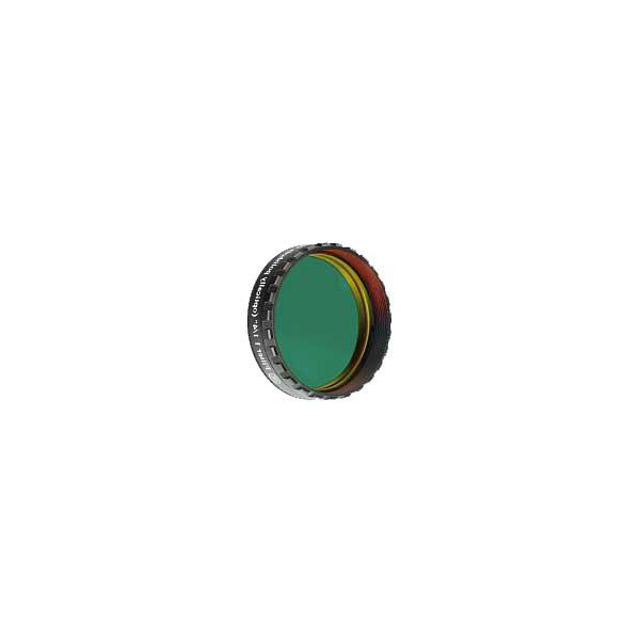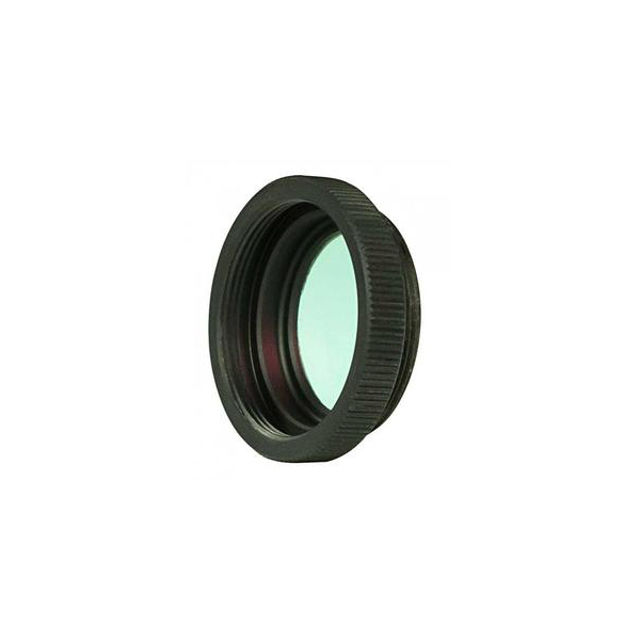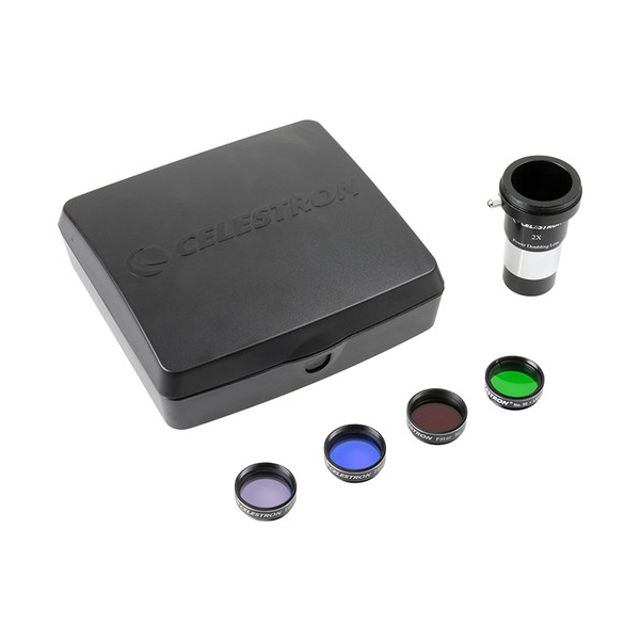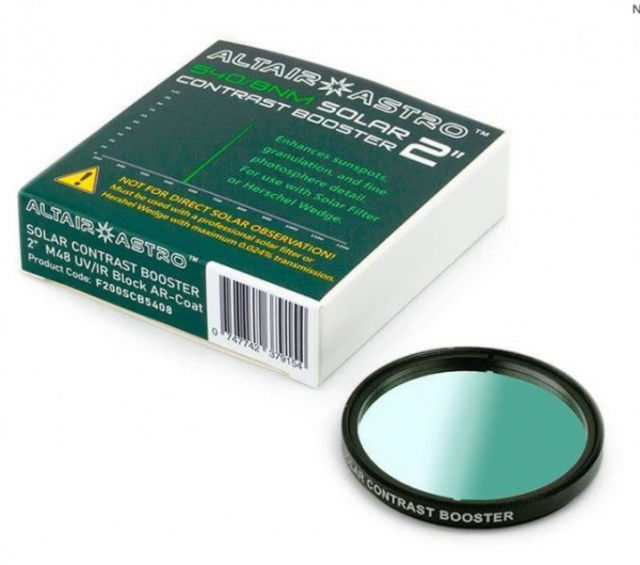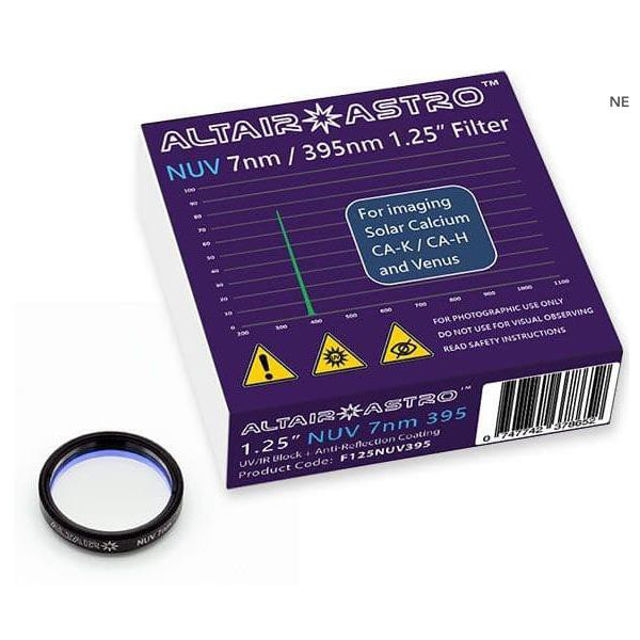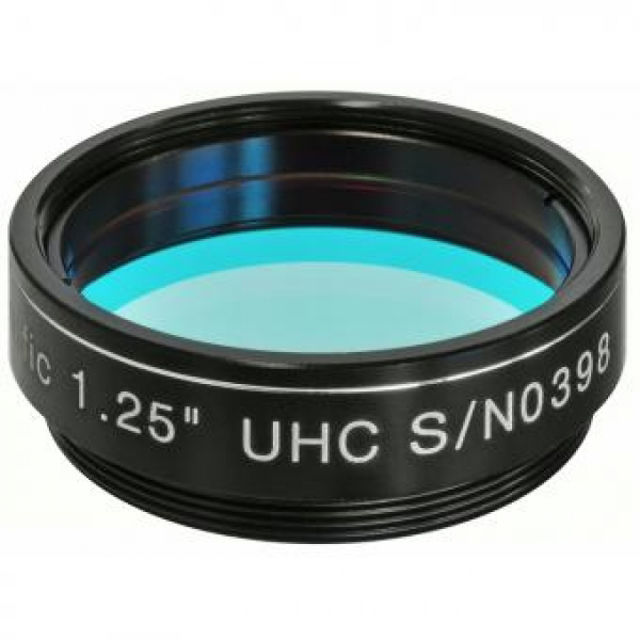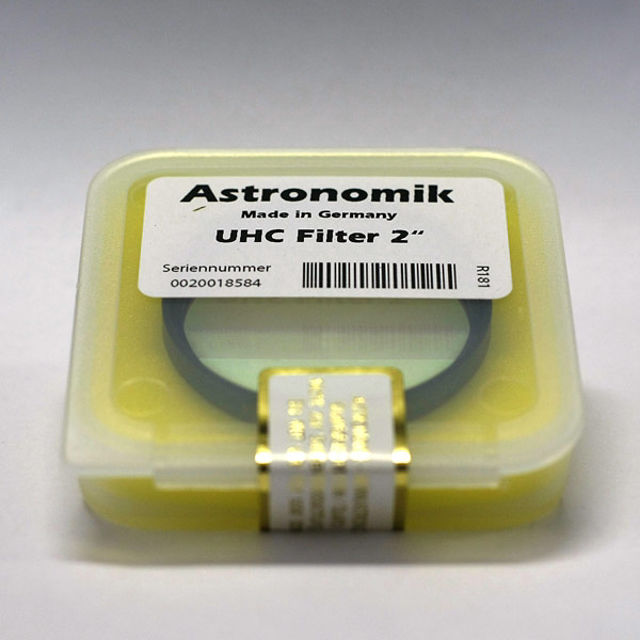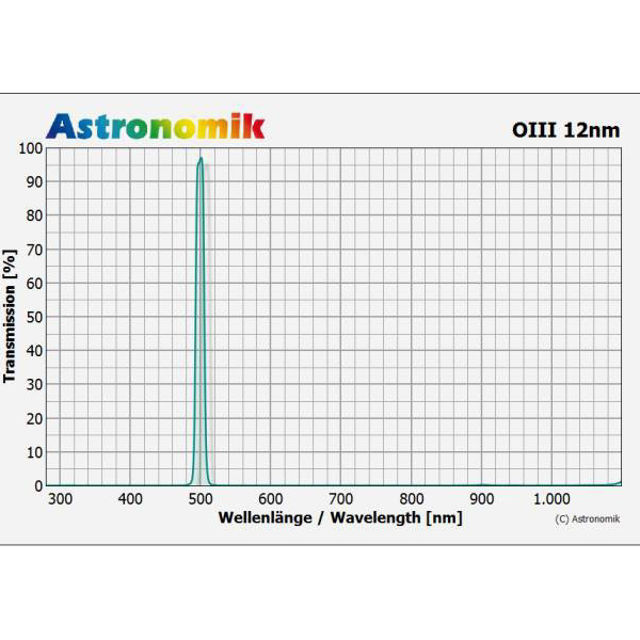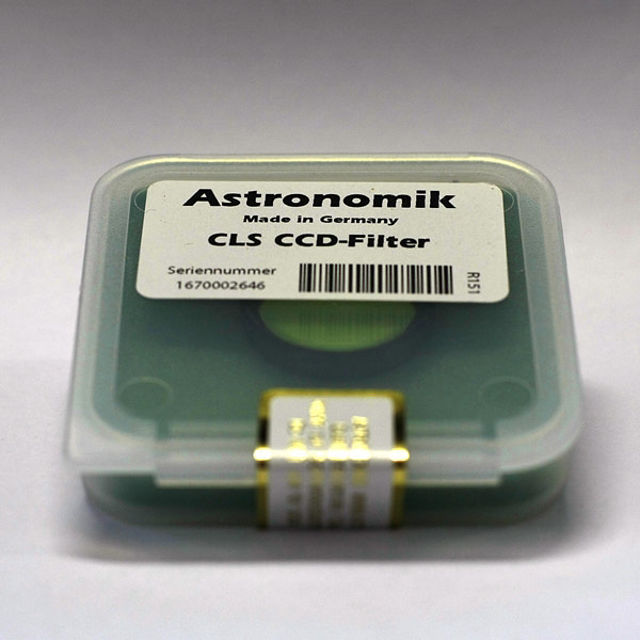Filter:
- Home /
- Secondhand & Stock /
- On stock /
- Filter:
Baader 1.25" Neutral Density Filter - Gray Filter ND3.0 - Attenuation 1000x
Item condition: new and original packed
Item condition: new and original packed
40.94 €
Estimated delivery time : 1-4 days (valid for new orders)
Baader Narrowband OIII 1.25" Filter
Item condition: new, but not original packed
Item condition: new, but not original packed
89.00 €
Estimated delivery time : 2-3 days (valid for new orders)
Celestron Blocking Filters Skyris IR-Cut Filter 1,25"
Item condition: new and original packed
Item condition: new and original packed
44.90 €
Estimated delivery time : 2-3 days (valid for new orders)
Celestron Mars Observing Telescope Accessory Kit; The perfect mars accessory bundle for any telescope that accepts 1.25" eyepieces Includes three colored Filters to enhance specific surface details on mars such as maria, deserts, and Polar Ice Caps 2x power doubling Lens doubles the power of any 1.25" telescope eyepiece Doubling Lens Also features built-in t-threads to attach a DSLR camera (t-ring not included) All pieces in the Kit can Also be Used to view Jupiter, Saturn, the Moon and many other Astronomical objects
Wichtiger Hinweis zur Mehrwertsteuer:
Dieses Angebot unterliegt mit Ausnahme der Versandkosten gemäß § 25a UStG der Differenzbesteuerung, weshalb auf den angebotenen Artikel keine Umsatzsteuer erhoben und ausgewiesen wird.
Wichtiger Hinweis zur Mehrwertsteuer:
Dieses Angebot unterliegt mit Ausnahme der Versandkosten gemäß § 25a UStG der Differenzbesteuerung, weshalb auf den angebotenen Artikel keine Umsatzsteuer erhoben und ausgewiesen wird.
49.00 €
Estimated delivery time : 2-3 days (valid for new orders)
The Altair 2" Solar Continuum filter Enhances sunspots, granulation, and fine photosphere detail. For use with Baader Solar Filter or Herschel Wedge. IMPORTANT SAFETY INFORMATION: DO NOT USE THIS FILTER FOR DIRECT SOLAR OBSERVATION! Must be used together with a professional solar filter or Hershel Wedge with Max. 0.024% transmission placed BEFORE this filter. For reflecting telescopes, we recommend Baader solarfilm on the front of the telescope, then screw the filter into a filter holder, camera, or eyepiece. For refractors, the filter should be positioned just in front of the camera or eyepiece with a Hershel Wedge in place. Do not use this filter without a suitable solar pre-filter in place, because it will permanently damage your eyes or camera! The Solar Contrast Booster works by filtering out UV, IR and visual wavelengths except for a narrow 8nm FHWM green band at 540nm. This greatly increases the contrast of solar features when viewed with the naked eye, colour or mono camera, revealing more detail around sunspots and granulation (fast-developing solar convection cells) in the solar photosphere. Highly recommended for use with either Altair Imaging-Ready APM Hershel Wedge or Baader Solar Film. NOTE: Do not insert the filter before your Hershel Prism or it will melt, it should be placed just in front of the camera, and it should be screwed directly into your camera 2" nosepiece by means of the M48x0.75mm thread, E.g. Hypercam 2" nosepiece or use an Altair Magnetic Filter holder with 2" filter slider (Search product code starting with "MAGF" and choose the correct threads for your camera). Why is transmission centred on 540nm wavelength? 540nm is a very desirable wavelength for imaging and observing the sun. The Solar Contrast Booster filter improves performance of any telescope optics such as Refractors, Newtonian reflectors, Maksutovs, Dall Kirkhams, Cassegrains, and SCT's. It's especially recommended with Frauenhofer Achromatic refractors and short focal length ED Doublets, because their optimum performance peaks in this green wavelength by design. In fact, not only Achromats, but most ED triplet and APO refractors traditionally have peak performance at 540nm wavelength, where the human eye shows best sensitivity. 530-540nm is not only the traditional "design benchmark wavelength" for most telescope optics, and also that of most high end interferometry equipment used to configure and optimise telescope lenses. Most colour and mono CMOS cameras also have peak sensitivity and resolution in green! Colour CMOS cameras in particular have an RGGB pixel layout with two green pixels for every one blue and red pixel, for an obvious increase in resolution. The are therefore many benefits in isolating this wavelength to capture those fleeting moments of good seeing. Altair Solar Contrast Booster filter specifications: Standard 2" Filter Thread Aluminium Cell Band CWL540nm 90% transmission FWHM 8nm 1.85mm thick optical glass λ/4, Parallelism (arcsec) 30" Si02 "hard" overcoat with UVIR Block 300-1100nm and Anti-Reflection Coating Scope of Delivery: Solar Contrast Booster Filter 2"
Item condition: new and original packed
Item condition: new and original packed
189.00 €
Estimated delivery time : 1-4 days (valid for new orders)
Product description Altair QuadBand is the new trend in light pollution filters for deep-sky imaging of emission nebulae with colour CMOS, CCD, and DSLR cameras. Altair V2 Filter Technology produces even better blocking of unwanted wavelengths, higher transmission, and no halos. The result is a better signal to noise ratio for imaging emission nebulae with a DSLR or CMOS Astro camera. The 35nm passband not only makes the QuadBand V2 compatible with fast focal ratio lenses and telescopes, but also allows visual use with a relatively small telescope in urban locations. Brighter emission nebulae can be observed in urban conditions with a darker background. This is the new QuadBand V2 Coating technology which includes: Anti-Halo coating on both surfaces to reduce reflection artefacts from reducers and camera lenses. Increased blocking of UV, IR and unwanted visual range wavelengths. UV OD7 (T0.00001%) Visual OD5 (T0.001%) and IR OD4 (T0.01%) for the ultimate in skyglow blocking. Higher transmission % of desired wavelengths Ttop 95% (Average 5% higher transmission of desired wavelengths). Ha and Oiii wavelengths at 35nm FWHM for with less tail-off to reduce unwanted light pollution. It's even compatible with fast scopes, like Altair F6 refractors which operate at F4.8 with reducers, and the F2 Celestron RASA and Hyperstar. Includes UVIR blocking for both modified and un-modified DSLR cameras, plus an anti-reflection coating to reduce halos as much as possible. Narrowband Bi-Colour imaging is a growing new trend in astrophotography, especially popular in light polluted areas, or for imaging in rural areas in moonlight. Now you can capture the two main emission nebulae bands at the same time, whilst suppressing light pollution, moonlight, and airglow. Capture more data in less time, and open up your imaging time window - even into the summer months. Altair QuadBand light pollution filters work by isolating the primary nebulae emission zones in the red and blue/green wavelengths, and separating them into two main "zones" with a wide separation for easy capture with a colour camera - all in one exposure! Not only is capture very convenient, but processing is easy too, thanks to the wide separation of the green/blue and red "zones". Light pollution control is extremely effective and LED light is also significantly reduced, thanks to the effects of Rayleigh scattering. Sensitive OSC or "One Shot Colour" CMOS cameras like the #Hypercam183C capture these wavelengths very efficiently, and allow them through the Bayer matrix. The filters also work with DSLRs (APS-C sensor size modified cameras are best, but normal ones will also work). When you have the complete stack of exposures, processing is relatively easy because of the large separation in colour. You can also use the Quad band and Tri-Band filters as a "super luminance filter" for imaging nebulae with Mono cameras. A quick overview of the Altair Filter family: QuadBand Filter - combines Sii AND Ha into a red zone, and H-beta + Oiii into a green/blue zone. (Recommended for moderate light pollution and skyglow, used with colour cameras). TriBand Filter - combines Ha into a red zone, and H-beta + Oiii into a green/blue zone. (Recommended for higher light pollution, used with colour cameras). DualBand Filter - separates Ha and Sii even more distinctly with even deeper blocking. (Recommended for severe light pollution such as within built-up areas such as cities. Used with colour cameras). NarrowBand mono camera filter - these isolate single bands, so you only capture one wavelength per filter such as Oiii or Ha or Sii, and they are mostly used with mono B&W astronomy cameras. Separate sets of exposures are required with each filter. Filter Specifications: QuadBand OSC filter CWL: 1st band, CWL495nm FWHM35nm 2nd band, CWL 660nm FWHM 35nm 1.85mm thick optical glass with 30 arc sec parallelism. UVIR Block and Anti-Reflection Coating. Delivered with: Filter
Item condition: new and original packed
Item condition: new and original packed
199.00 € 175.12 €
Estimated delivery time : 1-4 days (valid for new orders)
The Altair 395nm NUV filter selectively passes light of the two main Calcium wavelengths emitted by the sun: CA-K line at 393.37nm, and the CA-H line at 396.85nm. A specially developed multilayer interference coating results in transmission of approximately 75% at 395nm NUV wavelength. Bandwidth is approximately 7nm (FHWM), resulting in extremely high contrast in the selected wavelength with efficient blocking of unwanted wavelengths. Remaining UV and IR light between 400-1100nm is blocked at OD3 0.1%, and visible light between 400-700nm at OD4 0.01%. Imaging the sun: The filter is to be placed in front of a high speed CMOS video camera for displaying detail in the upper solar atmosphere, at the boundary between the photosphere and the chromosphere. Structures which cannot normally be seen by the human eye or cameras are revealed, including fast-evolving Ellerman bombs (micro-flares) and Plages, (bright networks near sunspots). Solar granulation is also enhanced, as well as umbral detail around sunspots. Imaging the planet Venus: The planet Venus also benefits greatly from higher contrast in the upper cloud layers, showing features normally invisible in white light. The high transmission allows fast frame rates. IMPORTANT: The 395nm wavelength is harmful and almost invisible to the eye, therefore the NUV filter is intended for photographic use ONLY. A pre-filter of at least OD3.8 is required to reduce radiation damage to the filter. A Herschel Wedge, such as the Altair Imaging-Ready Solar Wedge can be used, or solar film, provided the manufacturers instructions are followed correctly. Refractors are usually employed for solar imaging, however reflectors can be used, provided they have a large blocking filter over the front aperture (usually solar film or glass filter because Hershel Wedges cannot be used with reflector telescopes). Imaging requires a monochrome CMOS camera. A typical example with false colour and selective contrast processing is shown opposite (HDR filter, Photoshop). Specification: NUV transmission band, CWL 395nm FWHM 7nm Filter substrate: 1.85mm thick BK7 optically polished glass with 30 arc sec parallelism UVIR blocking: UV and IR light between 400-1100nm is blocked at OD3 (0.1%) Visible light blocking: Visible light between 400-700nm at OD4 (0.01%) Scope of Delivery: Filter Specifications: Cell: Aluminium Type: Interference filter Filter thread / size: 1.25"
Item condition: new and original packed
Item condition: new and original packed
199.00 € 175.12 €
Estimated delivery time : 1-4 days (valid for new orders)
Explore Scientific 1,25" O-III Filter
Item condition: new, but not original packed
Item condition: new, but not original packed
65.00 €
Estimated delivery time : 2-3 days (valid for new orders)
Astronomik 2" UHC filter
Item condition: new and original packed
Item condition: new and original packed
199.00 €
Estimated delivery time : 1-4 days (valid for new orders)
Astronomik 2" O-III filter 12nm
Item condition: new and original packed
Item condition: new and original packed
299.00 €
Estimated delivery time : 1-4 days (valid for new orders)
Astronomik OIII-CCD-Filter, 12 nm, Anschluss 1,25"
Item condition: new, but not original packed
Item condition: new, but not original packed
129.00 €
Estimated delivery time : 1-2 days (valid for new orders)
Astronomik CLS Filter 1,25"
Item condition: new and original packed
Item condition: new and original packed
69.00 €
Estimated delivery time : 1-2 days (valid for new orders)
- 1
- 2
